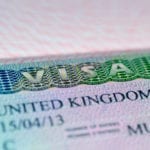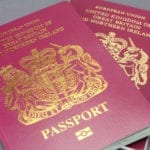Frequently Asked Immigration Questions
1. How do I get a work permit for the UK?
Work permit applications are dealt with by the Home Office Border and Immigration Agency. In order to apply you must have received a confirmed offer of employment from a UK employer who is both licensed and willing to act as your sponsor. You must also be in possession of a Certificate of Sponsorship, which has been issued by your sponsor. Part of your application involves passing a points-based assessment, which varies according to the Tier 2 Skilled Workers category, ie. General skilled worker, Intra-company transfer, sportsperson or minister of religion.
2. What is the difference between a Tier 1 and Tier 2 visa?
Put simply, Tier 1 visas are aimed at ‘high value migrants’ from outside the European Economic Area (EEA) and are split into two categories: entrepreneurs and investors. These are for migrants who can be classed as ‘exceptional talent’ and can therefore make a big impact on UK business and the economy. Tier 2 visas, however, are for ‘skilled workers’ from outside the EEA, often who have been transferred to the UK by international companies to cover a shortage or need in the UK.
3. What are the UK entrepreneur visa new rules?
An entrepreneur is classed as someone wanting to establish, join or takeover one or more businesses in the UK, and new rules have been implemented by the Migration Advisory Committee in 2016, mainly to add more clarity to the process and for the authorities to more easily assess whether an entrepreneur’s investment is genuine.
In summary, these new rules are:
- The Secretary of State must assess previous investments made in the UK.
- There is now no requirement to provide proof of third party funds from UK Government departments.
- Industry experts should be utilised to carry out genuineness tests.
- If applicants don’t have third party endorsements, the £200,000 investment threshold should still apply.
- Two years leave to remain in the UK shall be awarded to graduate entrepreneurs to allow them time to establish their business, rather than the previous one year.
- Tier 1 entrepreneurs are required to regularly report on business growth and future plans.
4. What are the different tiers of UK Visas?
The five different tiers of UK visas are as follows:
- Tier 1: High value migrants categorised as ‘entrepreneurs’ or ‘investors’.
- Tier 2: Skilled Workers categorised as ‘general’, ‘Intra-company transfers’, ‘sportspeople’ and ‘ministers of religion’.
- Tier 3: This was designed for low-skilled temporary labour but was never implemented and has been shelved by UK Government.
- Tier 4: Students over the age of 16 who wish to study in the UK.
- Tier 5: Six sub-tiers of temporary workers mainly aimed at young people and usually involving reciprocal arrangements for people in the UK. The six sub-categories are creative, sporting, charity, religious workers, youth mobility schemes and Government-authorised exchange.
5. How do I get sponsor list guidance?
Guidance is available on sponsorship both for employers and applicants on www.gov.uk.
Here you will find a register of licensed sponsors, but also important information on the sponsorship process, including:
- List of documentation required to support applications
- Records required to be kept
- What sponsorship involves
- An explanation of the different visa tiers
- An explanation of the fees involved
- How to apply for sponsorship
- Eligibility criteria
- The decision-making mechanism
- The duties of a sponsor
6. How do I change my immigration status?
It is possible to switch from some tiers of visa to other tiers, but not all. You should seek specific guidance on your circumstances from www.gov.uk, but fundamentally, you can only change your immigration status while your current visa is still valid. In order to report a change in your circumstances, you must do this while still in the UK and are in possession of your Biometric Residence Permit (BRP), or have applied for one.
Changes such as a new address are quite straightforward to make and can be done online at www.gov.uk. But a new BRP is required for the following changes:
- Name change
- Marital status changed
- Nationality changed
- Facial appearance changed
- Gender changed
In all these circumstances, notification must be made and a new BRP applied for within three months or you could face a £1,000 fine. A different form is required to be filled in depending on whether you have temporary or indefinite leave to remain in the UK.
A ‘change of circumstances’ form is also required to be completed for the following: criminal convictions, separation from a partner or if dependents have stopped living with you permanently.
Contact Us
Contact our Immigration specialist Reena Chauhan.
Call 0113 284 5000 today.




















